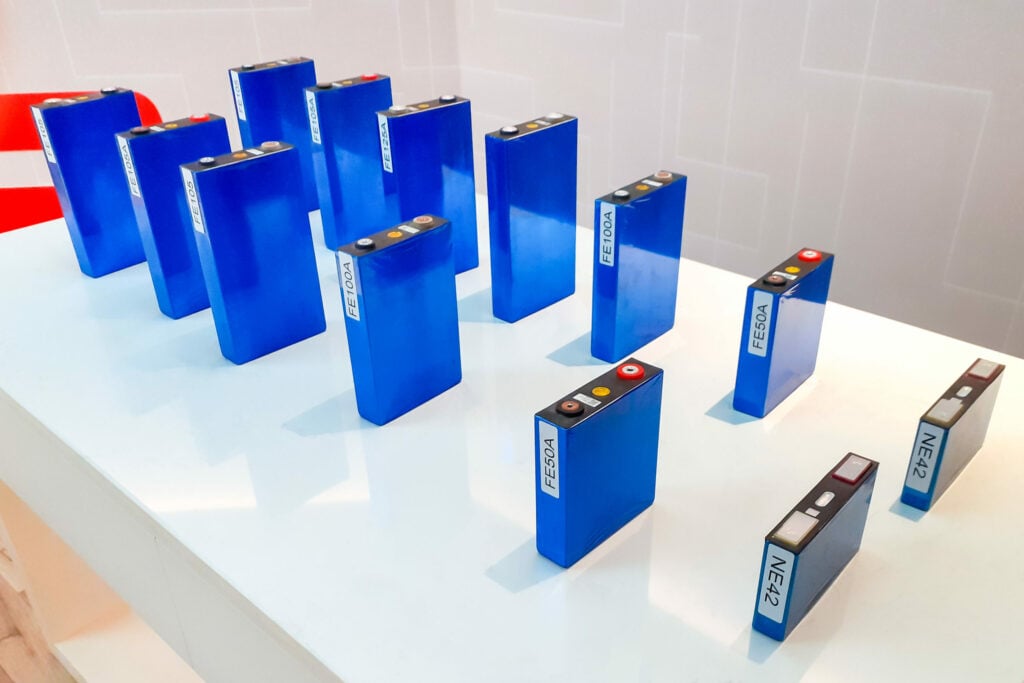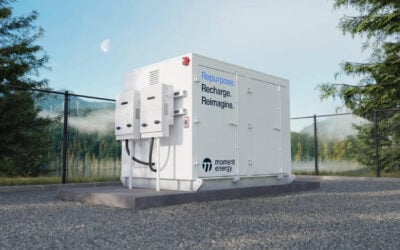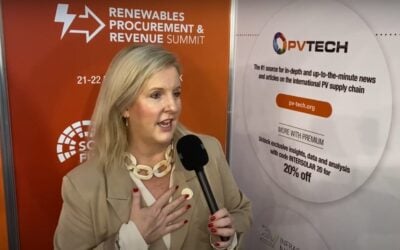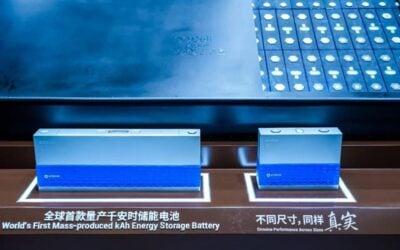
The European Commission’s policies aimed at supporting the manufacturing of clean energy technologies are a “game changer” for making the battery industry competitive.
That’s according to Claude Chanson, general manager of trade association RECHARGE, after the Net Zero Industry Act and Critical Raw Materials Act which were announced by the European Commission (EC) last week.
Enjoy 12 months of exclusive analysis
- Regular insight and analysis of the industry’s biggest developments
- In-depth interviews with the industry’s leading figures
- Annual digital subscription to the PV Tech Power journal
- Discounts on Solar Media’s portfolio of events, in-person and virtual
The proposed directives are aimed at creating an end-to-end value chain for various technologies categorised as supporting the low carbon energy transition, from the extraction and processing of raw materials to manufacturing finished products and solutions.
“These two Acts can become a real game changer for competitiveness of the European battery value chain,” Chanson said.
RECHARGE, which represents the European rechargeable and lithium battery industries, welcomed the acts and Chanson said that the EC had “rightfully identified actions to tackle the challenge of supply of batteries materials and to further stimulate the domestic production of net zero technologies of which batteries are part of”.
As reported by Energy-Storage.news last week (16 March) as the Acts were published, energy storage is included in the categorisation of net zero technologies, along with a broad range of other equipment from solar PV modules to carbon capture and storage.
That had not been the case in earlier leaked drafts of the Net Zero Industry Act, and one industry source had hailed the later inclusion as a “huge victory”.
What is also notable, the European Association for Storage of Energy (EASE) pointed out in a statement, is that the categorisation includes not just batteries, but all forms of energy storage, encompassing heat storage as well as electricity storage.
The EC had made a welcome effort to “guarantee technology neutrality and a level-playing field for energy storage,” EASE said, but added that it is important that whichever definition or definitions of storage make it into the Act in its final form is aligned with previous definitions given in the European Union’s Clean Energy Package.
That’s because the Package includes cooling as well as heating thermal technologies, EASE said.
The association also said that the EC’s stated aims to cut red tape and speed up permitting processes for clean energy projects, give better access to financing for manufacturers, make it easier to hire skilled workers and introduce regulatory sandboxes would all be “excellent measures”.
Stick vs carrot
However, both EASE and RECHARGE did offer some reservations. EASE sounded a note of caution that despite this positive activity on the supply-side, which tries to ensure 85% of all net zero tech deployed in Europe will be European-made by 2030, the European Union lacks a defined strategy on energy storage.
One industry source had described the EC’s proposed reforms to Electricity Market Design (EMD), also published last week, to be a kind of de facto energy storage strategy. It does unquestionably raise the profile of energy storage to play its most prominent role yet in the markets.
Yet with EASE having identified that there need to be about 14GW of annual energy storage deployments by 2030 for Europe to meet its 70% renewable energy target that time, it continues to fall well short with only about 1GW deployed across the EU nations in 2021.
RECHARGE meanwhile said that despite the hugely positive action the two Acts represent, the EU’s battery value chain remains mired in a complex mish-mash of regulatory frameworks, particularly around topics like recycling, industrial emissions and waste.
So-called “incoherencies” in having multiple legislative frameworks around critical raw materials and battery manufacturing that are inconnected, are something else the EC should take the opportunity to deal with now, RECHARGE manager Chanson said, noting that the two key pieces of legislation must also be adopted quickly “to avoid a standstill of projects”.
This stagnation of the rapid growth that was expected to be seen in battery manufacturing especially appears to be borne out first by anecdotal evidence and increasingly also in studies and analysis of the market.
A report covered by Energy-Storage.news last week found that around two thirds of European gigafactory plans are being delayed, or worse, cancelled. While various factors could be pointed at for this, not least of all spiking energy prices, the US’ Inflation Reduction Act (IRA) and its incentives for domestic manufacturing are being cited as taking investment away from Europe.
The Net Zero Industry Act and Critical Raw Materials Act are the European Union’s attempt to claw back some of the competitive ground it has lost to the US.
However solar PV trade group SolarPower Europe said in its own statement that the EC’s approach is restrictive and punitive – more stick than carrot, the group said.
Conversely, in an interesting mirroring of metaphors, one US-based industry expert told this site the Inflation Reduction Act’s package of tax credits and other incentives is “all carrot,” albeit another said that US trade policies, such as Section 201 tariffs on imported goods, are the stick to the IRA’s carrot.
Read the full texts of the Net Zero Industry Act proposed regulation here (PDF download), and read the Critical Raw Materials Act proposal here.






